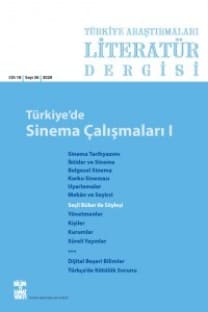Bizans İstanbulu Çalışmaları
Bizans İstanbulu hakkında ilk kitap XVI. yüzyılda yayımlanmış olsa da, bu konuyla ilgili ilk önemli çalışmalar XIX. yüzyılın ikinci yarısında başlar. Şehre dair ilk çalışmalarda fiziksel kalıntıları katalog tarzında belgelemek, neyin nerede olduğunu saptamak ana amaç olmuştur. Kimi çalışmalarda bunun için metinlerden de büyük ölçüde yararlanılmış, Bizans İstabulu’nun fiziksel topoğrafyası yeniden kurgulanmaya çalışılmıştır. 1970’lerde Bizans İstanbulu’na bakış oldukça değişmiş, şehrin sosyo-ekonomik yapısı, yönetimi ve çevresiyle ilişkisi ile sakinlerinin düşünce dünyası ve ihtiyaçları gibi konularla da ilgilenilmeye başlanmıştır. Bu bakış açısı, sonraki çalışmalarda daha da genişletilerek şehrin hamileri, etnik ve dinî grupları, şehirde güç ve otoritenin ifadesi, kadınların toplumdaki rolü gibi konuları da kapsamıştır. Türkiye’de Bizans İstanbulu çalışmaları, geriden gelse de, benzer bir süreç izlemiştir. Fiziksel kalıntılara yoğunlaşan ilgi yavaş yavaş şehre dair diğer alanların araştırılmasına kaymaktadır. Önceki yıllardaki yanlış tutumlardan dolayı kaybedilen zaman başarılı sergiler, konferanslar ve yayınlarla kapatılmaktadır.
Anahtar Kelimeler:
Bizans, Konstantinopolis, Topografya, Mimarlık, Arkeoloji, Top- lum, Ekonomi
Studies on Byzantine Istanbul
The first book on the Byzantine Constantinople was published in the 16th century but the real interest in the subject started only in the second half of the 19th century. In the early books, there was a tendency to document the physical remains of the city and to determine what was where. Some of these early studies tried to reconstruct the physical topography of the Byzantine Istanbul by making extensive use of textual sources. By the 1970s, the approach to the study of this city changed considerably and the topics such as its socio-economic structure, administration, relation with its hinterland and the mindset of its inhabitants started to attract attention. In the later years, the perspective was widened to include the patrons, ethnic and religious groups, the representation of power and authority and the role of the women in the city. Altough a bit delayed, the studies on Byzantine Istanbul in Turkey followed a similar process. There is now a shift from documenting the physical remains of the city to exploring its other facets. Today, successful exhibitions, conferences and publications about Constantinople, taking place in the very city, make up for the time lost due to the earlier prejudice against this subject.
Keywords:
Byzantium, Constantinopolis, Topography, Architecture, Archaeology, Society, Economy,
- ISSN: 1303-9369
- Başlangıç: 2003
- Yayıncı: Bilim ve Sanat Vakfı
Sayıdaki Diğer Makaleler
İstanbul’un Tarihsel Topoğrafyası ve Literatür Değerlendirmesi
Osmanlı Döneminde İstanbul’da Meydana Gelen Âfetlere İlişkin Literatür
Osmanlı İstanbul’unda Merasim ve Teşrifata Dair Kaynaklar
Cumhuriyet Dönemi İstanbul Nüfusu Literatürü Üzerine
Mehmet Zeydin YILDIZ, Suvat PARİN
Osmanlı Dönemi İstanbul Nüfus Tarihi
Kadir YILDIRIM, Ü. Serdar SERDAROĞLU
İstanbul’u Yazmak: Cumhuriyet Dönemi Tarih Metinlerinde Eski Başkent
